C&S Long Distance Tenders?
|
I have always wondered why the Rhode Island Locomotives 57-59 were given tenders with larger water tanks than usual.
They show up in the DPL Photos. Researching George Sebasian-Coleman's RRobb book, not all of the Rhode Islands from the U&N received them. The early shots show tenders that are the usual size for that size of locomotives. That leaves out the theory that they might have been a U&N Modification. However, in later years, we see the 57-59 with standard sized tenders as evidenced by 58 on the scrap trains, photos of 59 in Central City. I haven't found any later photos of 57. My speculation is that they were probably an experiment for the Alpine Tunnel district where water usage was high and the number of tanks was limited. Pure speculation on my part. Derrell? You made some tender etchings, what did you find? Any answers? WAGs? Rick |
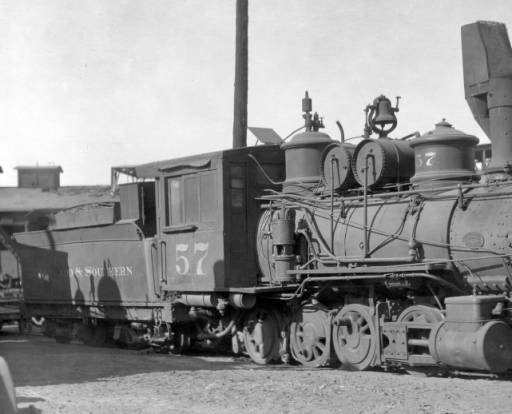
|
|
In reply to this post by Rick Steele
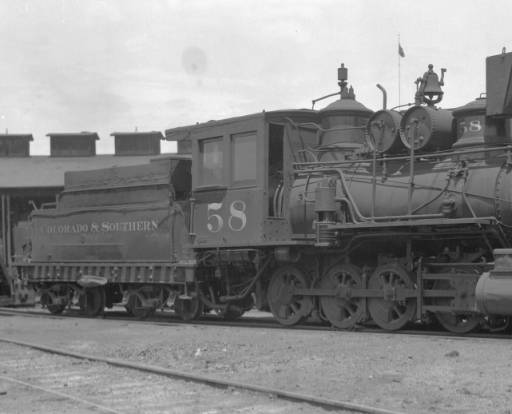
|
Re: C&S Long Distance Tenders?
|
In reply to this post by Rick Steele
CONTENTS DELETED
The author has deleted this message.
|
|
In reply to this post by Rick Steele
Some of the Baldwin B-4-Ds had long tenders as well.
Photos of #64 in 1913 and #68 in 1918 (the latter in Grandt's Narrow Gauge Pictorial VI, page 162). The photo of #64 was on a work train near Ferndale, the photo is in the Platte Canon book by Klinger, page 84. And at least one of the big B-4-Es, #72 had one in 1910 (NGP VI, page 188).
Jim Courtney
Poulsbo, WA |
|
Administrator
|
I had not noticed till now that #69 had a "long haul" tank in the late 30's. After abandonment, it had a much shorter tender.
Were any of the engines built with those long tenders? Good question, Rick. Jim, I think that tender behind #72 in the early photo you mentioned is it's correct tender. Maybe Derrell can shed some light on how often they may have been rebuilt or even replaced over the years. #71's tender today measures about 18' 6" long. #74's is 18' exactly. |
|
Harry Brunk wrote an excellent article in MR about 8 years ago on rebuilding 68 with a rebuilt (post 1920?) big tender tank. I don't remember the issues.
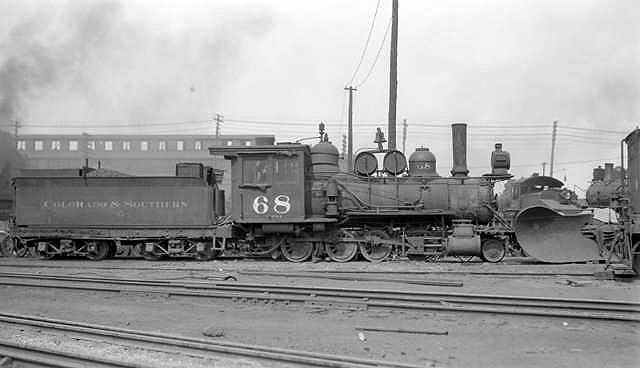 Here she was in 1917 with a big tank. This is a list of engines I found prior to rebuilding (meaning the flairs were removed) Engine 57 – 1912 Engine 59 – 1908 Engine 64 – 1902 Engine 65 – 1912 Engine 68 – 1917 Engine 70 – 1901 Harry speculated to me that perhaps these tanks came from old UPD&G sg engines of antique vintage (4-4-0s or ?) being scrapped at the TOC. I thought the idea was viable but have never pursued to verify that. I don't know how many such tanks were created. I've always thought no more than half a dozen at most. |
|
This post was updated on .
The 4-4-0 idea has merit, as we have 21 4-4-0's to choose from available at the birth of the C&S. Some of the 4-4-0's dated back to 1867.
The only thing that I would caution is to check the folio sheets. Since the width of the locomotive is not listed, we would have to guesstimate the length of the big tanks on the 3' gauge locomotives. A quick smattering of tank spec's for C&S Standard Gauge 4-4-0's. If there is no dimension info, then it is not on the May, 1903 Folio Sheet. Loco No. Capacity (gal) Tank Length Tank Height Flare Ht 101 3,000 17' 4" 42" 12" 102 2,650 105 2,750 107 2,200 110 2,200 17'4" 48" 12" 133 3,500 18'0" 3'8" 12" 132-138 3,000 143 4,000 22'1" 4'0" 12" 144 3,200 146 3,200 On this sheet, the Rhode Island Locomotives (57-62) show a 1,600 gallon Capacity and the largest capacity is 71-73 at 2,200 gal. Keep in mind that if the tender tanks came from Broad Gauge Locomotives, that the tenders would have to be narrow enough to fit through a close-clearance tunnel between Hancock and Pitkin. Photos were taken of the Rhode Island Locomotives with the large tenders on the Gunnison side of the Tunnel. If the locomotives were early enough (Like the 1869 Tauntons and the 1867 H&W's) the tanks might work without modification. We know that common standard widths grew in 1865 with the death of Abraham Lincoln. Platforms had to be cut down to accommodate the Pullman Cars in the Lincoln Funeral Train. These locomotives were early enough that the old specs might have been used. Of course, the tenders may not have come from the 4-4-0's at all but from the 2-6-0' and 4-6-0's, which had tender tanks more in the 18' category. If we go to Folio 22 We see that the gallonage for the 57-62 is not listed, but the tenders have grown to 17'6", with a 3'6" height with a 12" tender flare, with the same specs being shown for all of the locomotives up to No. 73. It is my feeling that the big tenders came in somewhere between the two folios that I have. Perhaps they were not kept because the weight of the tender on the rail may have caused the rails to spread. We experienced this on the 844 when we kept it overnight at places like North Platte. I had MOW people tell me that they could expect derailments for a week in the spot that we overnighted near the wash rack because the track couldn't take the weight of the locomotive. Remember, these are GENERAL numbers and don't reflect any particular locomotive number, use may vary by altitude, Fireman, fuel consumption, and drinking NALCo treated tender water will give you the runs. Rick |
|
In reply to this post by Derrell Poole
For all you math whizzes out there, the B-4-D Locomotives for the era shown in Derrell's photo show having a 5'2" cab length. The door to the cab deck is slightly open so don't measure it when estimating the tank length
Rick |
|
In reply to this post by Rick Steele
Great "nuts and bolts" information Rick. Thanks.
|
|
In reply to this post by Rick Steele
Rick (and Derrell):
What is the purpose of the tender flare? This is a detail that seems pervasive earlier, and was removed on both the D&RG and C&S in later years. I can understand how a 12" flare above the deck would provide a means for added wood storage for a wood burner where cord wood is stacked on every available surface. On coal burners, the flare at the rear over the water tank seems more cosmetic. Not that there is anything wrong with that.
Keith Hayes
Leadville in Sn3 |
|
I don't know the purpose of the flair. Flairs on tenders go way back and probably for the reasons you've suggested - because they aided stacking of wood on the tank deck. Maybe someone knows more about the flairs purpose.
Flairs began coming off of the ng engines perhaps as early as 1917 with the second rebuild of the B-3Cs but certainly by the summer of 1918. The portion of the Flair behind the coal bunker was trimmed down to a few inches. Very quickly thereafter the bunkers were built up with sheet metal and the flair bent upward vertical next to the bunker. It was trimmed off completely behind the bunker. Finally the flair was removed altogether in the early '20s. But this was not the first time a C&S engine had the flair removed completely behind the bunker. Some 16 years earlier at least one engine had a tender with no flair behind the bunker. What engine was that anyone? Perhaps one reason for removing the flair was the water hazard during the winter when it would freeze on the tank deck around the fill hatch. We see that this was an issue in that weep holes were placed in the rear corners of the flair for drainage. The rear course of the flair was painted with 3 lines of data and the engine number. The data included weight limit, water capacity and coal capacity. The engine number separated the nomenclature from the amount thus "WEIGHT LIMIT" 69 "XXXlbs". Of course with the flair gone the number moved to the reservoir mounted on the back of the tender and the capacities simply not applied. |
|
The flare on the tender of CCNG/GB&L (ex FIdeCA) 44 was used to direct water off to the side of the tender rather than have it spill and run down the sides of the tender when it overflowed or sloshed out the fill spout.
There were small spouts in the corners of the tender and the water would run through the spouts rather than blowing all over the cars and passengers. The only thing that I knew that when the tender overflowed it was a good place to take a shower, as there was no running water at our depot in Central City. It was cold, but it worked. We used to fill the tender up at night for the first run of the morning. Rick |
Flaired Tenders and Marker Light Brackets
|
Administrator
|
This may be a mere coincidence, but it has seemed odd that the marker light brackets on the rear corners of C&S tenders hold the lamps outward from the corners in just the same location of where the rear flaired corners once were.
Why those brackets were mounted on that way is unknown, but they were. It seems a lot of trouble to go to for the purpose of an extra few inches of height and width when the markers were hung. Would have been a lot simpler, and arguably safer, to have just placed small flat brackets at the corners of the tenders. The marker lights would have been carried inside the locker boxes. at the front corners, and would have been used on helper engines running light on downhill tangents. One of the photos that showed the upper angle of #70's oil bunker shows two lamps sitting on the top of the bunker. These would have burned oil, as there were no electrical connections for them. I believe the left side corner bracket on #70 in the same photo was broken off. |
Flaired Tenders and Marker Light Brackets
|
Administrator
|
In reply to this post by Rick Steele
This may be a mere coincidence, but it has seemed odd that the marker light brackets on the rear corners of C&S tenders hold the lamps outward from the corners in just the same location of where the rear flaired corners once were.
Why those brackets were mounted on that way is unknown, but they were. It seems a lot of trouble to go to for the purpose of an extra few inches of height and width when the markers were hung. Would have been a lot simpler, and arguably safer, to have just placed small flat brackets at the corners of the tenders. The marker lights would have been carried inside the locker boxes. at the front corners, and would have been used on helper engines running light on downhill tangents. This is an interesting and distictively C&S detail that helps give your engines a "family" appearance. One of the photos that showed the upper angle of #70's oil bunker shows two lamps sitting on the top of the bunker. These would have burned oil, as there were no electrical connections for them. I believe the left side corner bracket on #70 in the same photo was broken off. |
Re: Flaired Tenders and Marker Light Brackets
|
Are you meaning these lamps? Those were brakemans lanterns, one red/one white needed for protection of trains at night. Can't say I've ever seen those sort used for markers either.
 http://digital.denverlibrary.org/cdm/fullbrowser/collection/p15330coll22/id/42635/rv/singleitem/rec/21
UpSideDownC
in New Zealand |
Re: Flaired Tenders and Marker Light Brackets
|
In reply to this post by Mike Trent
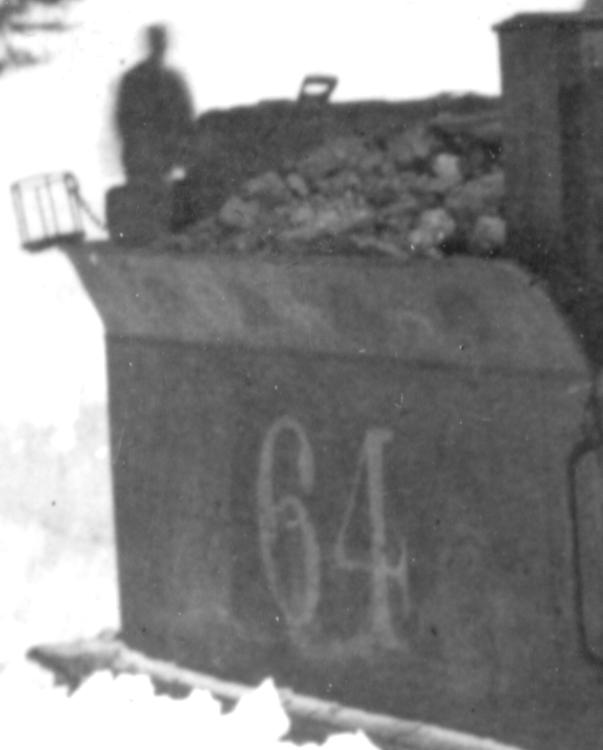 I donno... maybe it was just tradition? 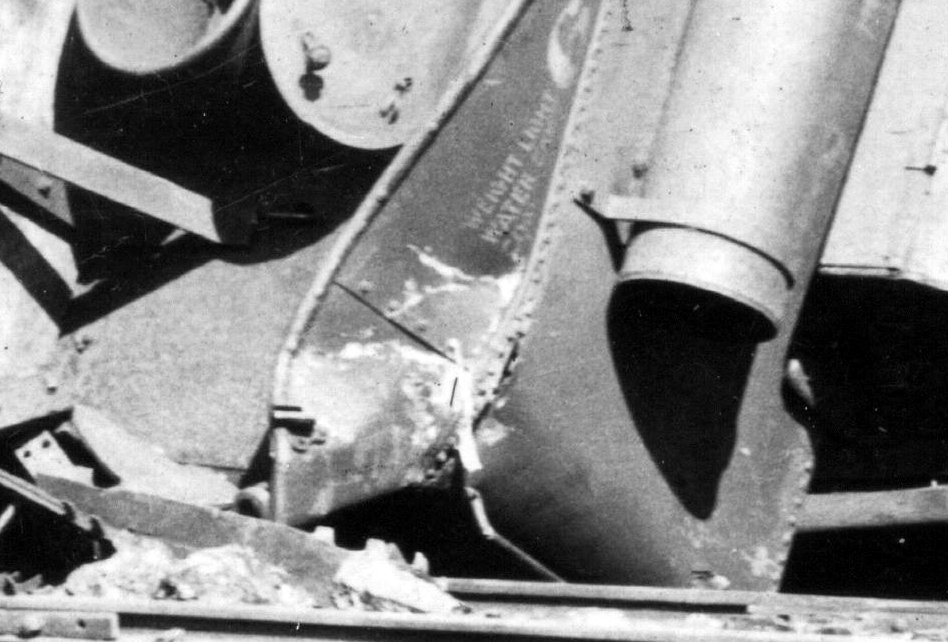 This is by far the best photo of that bracket on a pre-1918 tender. 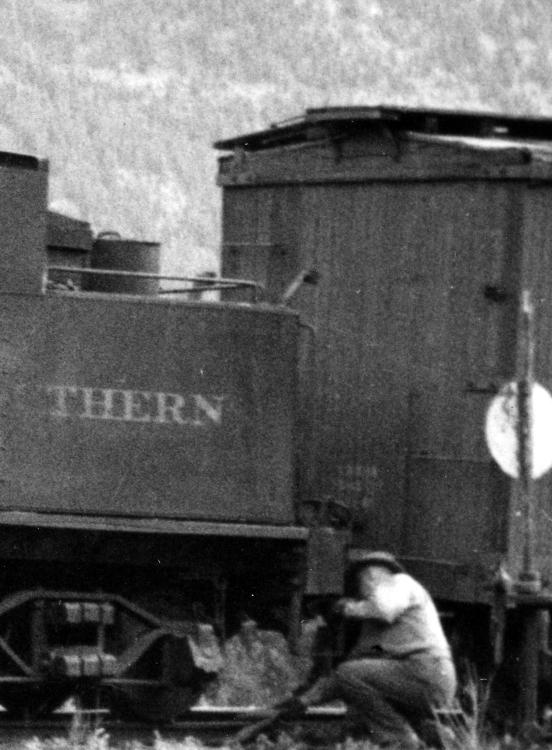 Of course the brackets changed again after the tenders were rebuilt. But they were still in the same location and the lamps road at approximately the same height. So maybe that was a requirement? |
Re: Flaired Tenders and Marker Light Brackets
|
When running tender first the proper signals (lamps) had to be displayed.
When running light, red signals had to be displayed on the rear to signify the end of the train. The definition of a train is: An Engine (or locomotive in some rulebooks) with or without cars, displaying signals. Rick |
Re: Flaired Tenders and Marker Light Brackets
|
Administrator
|
In reply to this post by Derrell Poole
Great pics, Derrell, thanks.
Maybe it's just one of those quirky things that defines the C&S. The tender truck design, the wood coal gates, the use of the boxes at the front of the water legs to anchor the bunker side sheets, and the marker brackets which seem to be influenced by the old tender flairs all reflect to a time before C&S days on the South Park. |
«
Return to C&Sng Discussion Forum
|
1 view|%1 views
| Free forum by Nabble | Edit this page |

